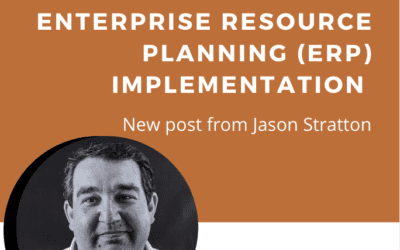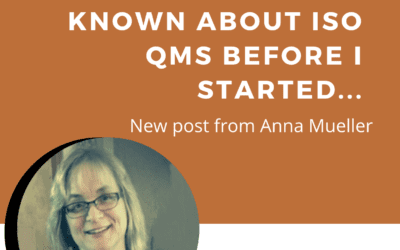From my early days working in a precision sheet metal shop and through my career as a lean consultant, I frequently have found it challenging to convince finance teams to allocate funds for continuous improvement projects. They understandably want to see, if not an immediate payback, then a rapid return on investment (ROI).
Is there a way to determine how much money could be saved by developing a facility layout focused on improved material flow? Can you accurately estimate the potential value of a setup-reduction project or the financial impact of a continuous improvement event?
The answer to all these questions is yes. Yes, you can.
An Important Lesson
During my time at a sheet metal company early in my career, a customer requested that we stamp a part number, revision level, company initials, and date of manufacture onto each part. This meant that every time I set up a new part on my turret punch, I was required to change the part-marking tool.
My idea was to ask for a second letter-stamp tool so that I could set it up while the previous part was still running. My boss’s answer to my request for the tool was in the form of a question: “How much will this tool cost?”
“$650,” I replied sheepishly.
Since we had seven turret punches, he quickly calculated the total cost of outfitting each machine with an auxiliary letter-stamp tool: “$4,550? I can’t do that!”
That was an all-too-familiar response. Thankfully, that is not the end of the story.
A couple of days later I spied my boss, calculator in hand, walking through the shop toward my machine. He asked me about the letter-stamp tool.
“Tell me again, how long does it take to set up that tool?”
“10 minutes. Ten to 12 times a day.”
“And you’re not the only one doing that—each of these six other machine operators is doing the same?”
“Right.”
He turned to his calculator. “Ten minutes per day, 10 times per day, times seven machines, working three shifts. Why, that’s 2,100 minutes per day that these machines are not producing parts, just because everyone needs to change over this letter-stamp tool. That is 35 hours, almost one week’s production for one machine.” He pointed to my machine.
“Do you have any idea how much money this machine generates per hour in revenue when it is running?”
I shrugged and shook my head.
“Thirty-five hours of lost production time at $65 per hour means we are leaving $2,275 on the table every day! We can pay for those tools in two days. In a year we could gain over half a million dollars in additional capacity.”
I could not hide my smile of satisfaction. Without knowing it, my boss did me the greatest favor of anyone in my career.
He could have sat in his office and done the calculations on his own and purchased the tooling without any further input from me. But he saw this as a teachable moment. And since that moment, I never went to my boss again with an idea without being prepared to show the financial benefit. That five-minute MBA lesson gave me (and any team I was working with) the ability to look at any process and determine the ROI of any idea.
To that end, I built a simple spreadsheet that I could use right on my smartphone as I performed a shop walk-through. Based on years of experience as well as anecdotal and hard data, this tool helped me give management teams an accurate estimate of the cost and benefits for some of the most common continuous improvement projects. DOWNLOAD: Measuring Impacts Worksheet
Setup Reduction
Based on decades of experience, I can tell you that most machine setups can be reduced by more than 50%. Simply by reorganizing the work area, developing standardized practices, applying a water-spider (setup assistance) strategy, and performing offline (pre-setup) activities, you can eliminate half of the machine downtime.
The ROI of 5S
To calculate the financial benefit of a clean, organized workspace, start with the 5S audit. Based on a 1 to 5 scale, each workspace is observed and measured in relation to five questions per the “S” category— sort, set in order, shine, standardize, and sustain.
When operators find items within arm’s reach—with shadow boards and dedicated locations for material, tools, and paperwork—they spend minimal time searching and they can shave minutes off every activity.
The ROI of Lower Employee Turnover
How much would you be willing to pay to cut the ongoing cost of turnover in half? After all, you’re paying for turnover already. Say you make an investment to create meaningful entrance and exit interviews, incentives, bonuses, supervisory and team training, and recognition programs. All that might add up to $1,000 per person. For a 50-person company, that $50,000 investment could begin to change the culture and reduce turnover. A 50% reduction could net $200,000 in savings.
Lean Can Be Quantified
Just like my boss did for me way back in 1986, teach your team members to think like a businessperson. Take time, work with them, and show them how to calculate the value of their ideas. Their working life will become more enriching, and your company and their jobs will become more sustainable. By having everyone thinking about how valuable each minute of the day can be, the seven forms of waste will become a daily target for your entire team.
Calculating potential set-up reduction savings Worksheet
If you’re an Oregon manufacturer who wants to grow sales, cut expenses, increase capacity, or all of the above, schedule your no-cost business health assessment with OMEP today. We can help you identify the ROI on key improvement initiatives quickly.
Do you want more details? Read the full article from Gary Conner in the Fabricator.




